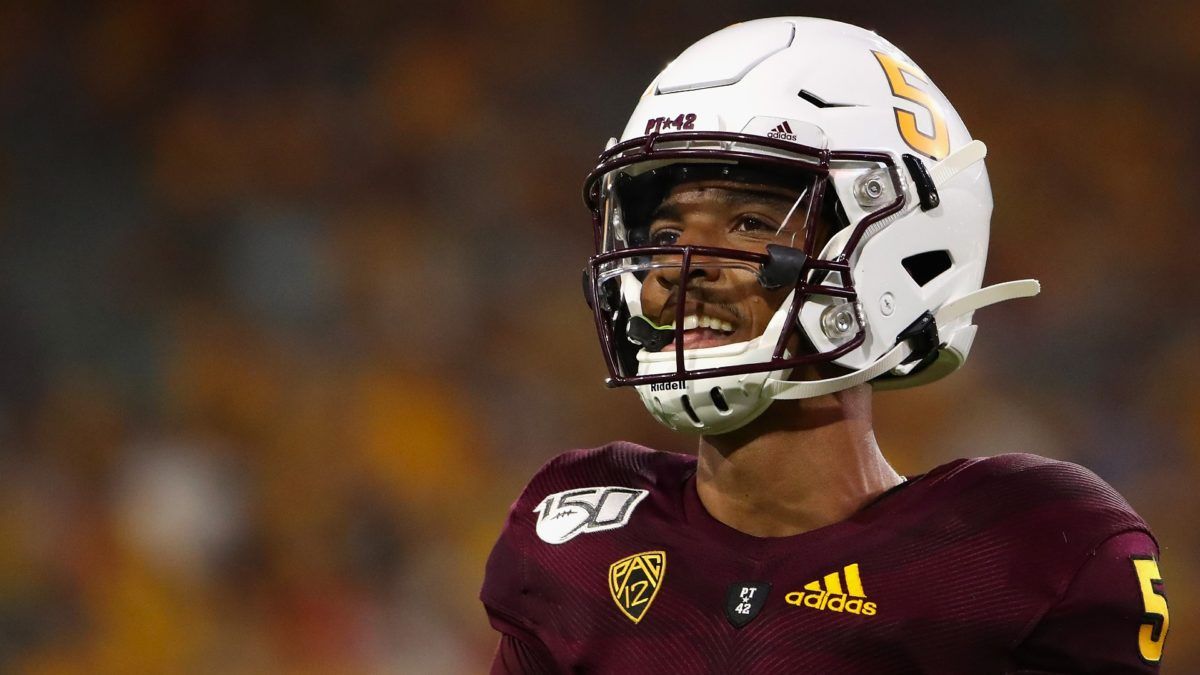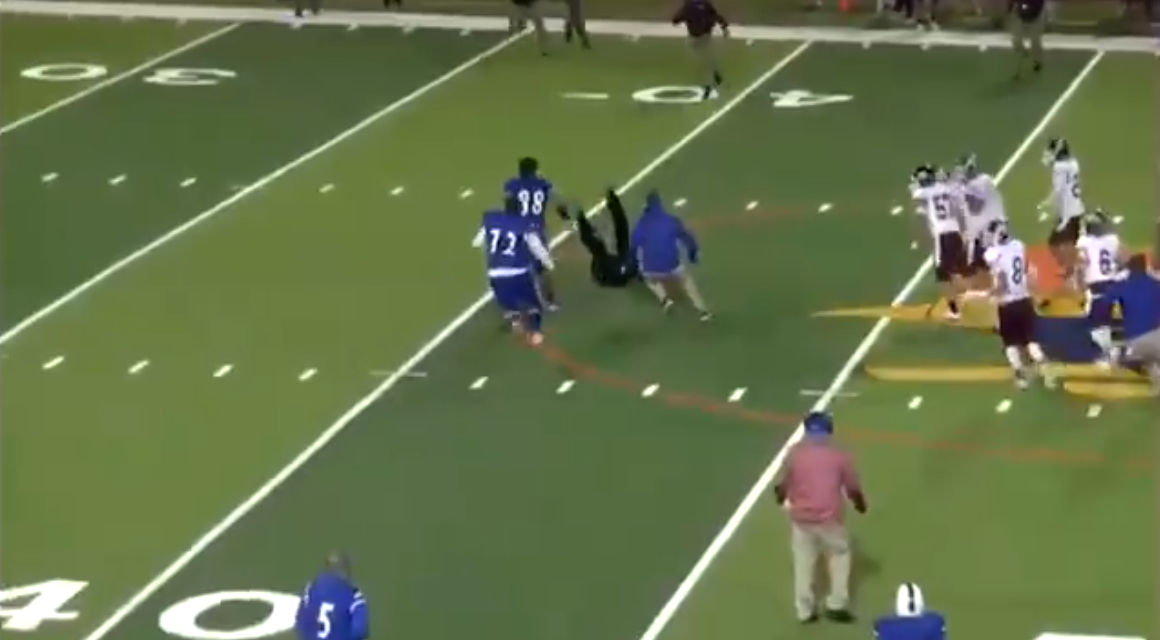- Betting The Moneyline In Football Championship
- How Does The Moneyline Work In Football Betting
- Betting The Moneyline In Football Odds
- Betting The Money Line In Football
When it comes to betting on college football, you have plenty of options. Sportsbooks offer a variety of wager types involving things like totals, point spreads, and all sorts of prop bets. Perhaps the most straightforward of all the college football betting styles is the moneyline bet, which is strictly a pick for who will win the contest, nothing else.
The NCAA football season is a particularly exciting time of year for moneyline betting. College athletes tend to see more variance between performances due to a variety of factors, powerhouse programs. In sports betting, a moneyline bet is a wager on which team will win a game. Moneylines are the primary wagering option for hockey and baseball, while for basketball and football they are viewed as a secondary alternative to the point spread. Have you ever heard of moneyline betting?
- Moneyline bets present the most straightforward way to wager on a sports contest. A moneyline wager simply asks the bettor to choose which team will win a game, with no point spread involved. The payout odds on the favorite and underdog can differ significantly on a moneyline bet.
- Moneyline betting simply require the team you’re betting on to win outright. The odds attached to each team denote an underdog and a favorite, which determine how much you win if your bet pans out. If you’re used to betting on NFL spreads, you’ll already be familiar with the concept of moneyline odds.
The NCAA football season is a particularly exciting time of year for moneyline betting. College athletes tend to see more variance between performances due to a variety of factors, powerhouse programs play significantly smaller schools in one-sided “contests,” and multi-touchdown point spreads are a common occurrence.
These, plus many other variables, all come together to make moneyline wagers a challenging but rewarding style of gambling on the college game. In this article, we’ll be discussing several strategies and betting systems designed for picking winners straight up in the NCAA arena.
Some of these tips will merely be details worth examining when looking to place a moneyline bet, while others are tried and true college football betting systems.
We aren’t only looking to win a high percentage of games; that’s easy with so many lopsided matchups. We’re here to turn a profit and help our readers do so as well. And that requires picking the right games and hitting a mixture of underdog and favorites selections to maximize earnings and manage risks.
Slight Road Dogs
Something that’s often repeated with regards to betting underdogs is only to bet them if you really think they can win, even if you take the points. Well, a Bet Labs gambling system has found that wagering on the road underdog moneyline is profitable in games expected to be close contests. You’re looking for road teams who are getting between +2 and +6.5 points, ideally.
One of the reasons this college football moneyline betting strategy is useful is because public money frequently pours in on the favorite. Casual bettors seem to feel more comfortable taking the favored home team when the spread is a relatively narrow margin. The more money that comes in on the home team covering the spread and winning, the more value you’ll get for the underdog on the moneyline.
This system has proven to win about 50% of the time, on average. That’s a phenomenal winning percentage when betting underdogs moneylines. These games will frequently pay out between +130 and +155, meaning you could profit without even hitting half the wagers. At 50%, you’ll be building up the bankroll rather quickly.
70/30 Moneyline Strategy
The betting strategy detailed in the last section will be included in this one. Once again, you’ll be looking to spot probable upsets and bet them on the moneyline rather than taking the points. This time, we aren’t looking at the spreads so much as the betting action.
A Sports Insights system has found that underdog squads receiving less than 30% of the action have gone 11 – 5 against the spread. That’s a nearly 70% winning percentage! But we aren’t making point spread bets; we’re sticking with the moneyline.
Of those 16 games, 10 of them would still have won had they been bet straight-up. The spreads ranged from +2 to +11.5, showing that when the public is overly optimistic about one side, it pays to be a contrarian.
So, let’s say you put $100 on a moneyline bet for each of these 16 underdogs who received less than 30% of the total betting action. With those ten victories, you would be up a total of $1,474, making this one of the best college football moneyline betting strategies around.
The 70/30 strategy is a massively successful system and is one of the reasons why investing in a service that tracks line movements and action is worth the cost.
Look for Active Underdogs
Betting The Moneyline In Football Championship

You may have noticed that college football moneyline strategies tend to take one of a few different approaches to winning. They either focus on teams who are extreme favorites or try to spot underdogs with high potential to score an upset. This is the latter, an attempt to score more underdog moneyline wins.

No matter which college football experts or pundits you listen to, there’s always one consistent variable included in their handicapping: players’ emotions. At this level of the sport, athletes are more prone to significant variance when it comes to performance. Handicappers are always on the lookout for letdown games, emotional bounce-back contests, and teams looking past their next opponent.
How Does The Moneyline Work In Football Betting
Programs coming off an emotional win, possibly as an underdog triumphing over a bitter rival, frequently perform well below expectations in the following game. Meanwhile, teams that were recently upset themselves often dominate their next opponent with an inspired return to form.
Then you have highly ranked teams focused on a matchup with playoff or championship implications in a couple weeks who forget about the game that must be played in the meantime. These overlooked squads come out and shock the cocky team somewhat often, ruining the hopes they had for the following week before the kickoff.
Since we’re looking for college football moneyline betting strategies, a solid place to start is by identifying schools facing one of these scenarios. Look at the matchups immediately before and after their most heated rivalry games, as well as any contests against top-ranked opponents. Mark those games off on your calendar to revisit when it’s closer to gameday.
Betting The Moneyline In Football Odds

Then, all you have to do is analyze the squads’ recent performances. Do they fit any of the conditions mentioned above? Are they playing an underdog divisional opponent immediately following a huge win over a rival? That might be a great place to lay some action!
Mike Wohl’s Heavy Favorites Moneyline System
At the annual MIT Sloan Sports Analytics conference, MIT graduate Mike Wohl presented a new ultra-conservative approach to college football moneyline betting strategy. He found that he could expect returns of 12.24% on the season, an excellent rate of return, by only gambling on heavy favorites on the moneyline.
He focused on point spreads ranging between 20 and 25 points and then bet them straight-up without the points. Throughout the NCAA football season, there are 4.5 games per week on average that fit these criteria.
Betting The Money Line In Football
By themselves, each of these wagers barely earns a profit, as should be expected when betting favored teams moneylines. However, with a big enough bankroll and staking amount, this slow, safe approach leads to returns that are competitive versus any investment portfolio. Considering the fact that teams with such broad point spread margins win their matchup roughly 95% of the time, there’s minimal risk involved.
If you have the patience and the bankroll to execute such a plan, it’s one of the safer ways to grow your bankroll over time. One thing to be wary of, however, is that some sportsbooks pull the moneyline odds as soon as the spread increases beyond 11.5 points or so. Online gambling sites will most likely be your only option for attempting such a strategy.
The Favorites’ Four-Team Parlay
Building on the same fundamental concept behind the Mike Wohl system, you may also want to try this college football moneyline betting strategy which utilizes parlay cards to improve payouts. While this method of betting on heavy favorites may carry a bit more risk, it also drastically increases the timeline for growing your bankroll.
To implement this betting system, you must find home teams that are favored by at least 14 points but are preferably closer to the 20-25 used in the previous section. You bet these four games on the moneyline parlay, which should average out to around -130 gambling odds.
To profit using this method, each individual game should have at least an 87% probability of winning their contest. At -130 odds, you only have to win 57% of your four-teamers to ultimately increase your bankroll. In most leagues, finding four teams per week that are so heavily favored would be nearly impossible, but in college football, there’s always some powerhouse squad using a lesser school as a warm-up game or active bye week.

Despite having to win at a high rate in order to profit, don’t let those percentages intimidate you. During the NCAA football season, two-to-three-touchdown favorites cover about 95% of the time. Once again, these moneyline odds won’t be available at most land-based sportsbooks. But online, you should be able to find bookies who will accept these conservative college football moneyline betting strategies.
Upsets Based on Travel
While many of the strategies in this article are fully-designed betting systems meant to be strictly followed to gain an edge, this tip is merely something worth identifying when looking for underdog moneyline candidates. A variable that many handicappers forget to consider is the effect travel has on the human body, and thus, athletic performance.

In particular, traveling from the west coast to the east has shown to decrease players’ abilities on the field of play dramatically. Northwest University did a study on circadian rhythms and their impact on athletic output and found that jet lag was a significant factor. Furthermore, for each time zone a team must travel through, it takes an additional twenty-four hours for the body to fully adjust back to its normal levels of speed, strength, and stamina.
If you identify schools that are heading east for their matchup, you can then see if they match any of our other criteria to find a high-probability upset pick. Imagine a road team that flew across the country and received over 70% of the public money that week. Talk about the ideal opportunity to employ some of our college football moneyline betting strategies.
Organize Your Staking by Favorite or Underdog
For the most part, when betting college football games on the moneyline, you’ll either be betting on a significant favorite or a slight underdog. When organizing your gambling this way, it’s crucial to have a system for your staking. Rather than bet the same amount for each contest, your staking amounts should change depending on the wager.
For the sake of this example, let’s say that your base unit of betting is $100. That’s your standard amount to stake and equals one unit. Whenever you’re using a college football moneyline betting strategy that focuses on taking the favorite, stake the amount required to produce one unit of earnings.
So, if you’re picking a -400 favorite, you’ll stake four units to win one. On the other hand, when you’re gambling on the upset, you merely have to put up one unit in an effort to win anywhere from one-and-a-half to three units. You’ll always be either betting $100 or trying to earn $100, depending on the result you’re working for.
Last Thoughts
College football lends itself well to moneyline betting strategies. With 128 participating Division I programs, there’s an enormous gap in talent between the top schools and the bottom feeders. Regardless, the disparity in ability does not stop these juggernaut teams from facing off against significantly weaker sides regularly.
Remember, when using the MIT graduates conservative moneyline system, there are roughly 4.5 matchups with point spreads of 20-25 points every week! Not only do we have tons of mismatched games where one squad is seriously better than the other, but there are also many upset opportunities if you know where to look.
A winning long-term college football moneyline betting strategy will diversify your bets into a mix of massively favored schools and slight underdogs. The 20-point favorites will win about 95% of their contests and create profit slowly, while the dogs only need to triumph around 50% of the time to increase the bankroll.
By focusing on a bevy of factors, from travel to weather to where public money is going, you can identify enough of both types of these matchups to benefit from each and every week. To quickly locate the best games on which to gamble, you may want to consider signing up for a sports betting analytics site like Bet Labs or Sports Insights.
There are also some powerful free tools out there, though they’ll require the ability to write SQL queries or will generally take more work to utilize. Whatever you choose, you’ll want a better way to locate the ideal scenarios to employ the systems and strategies than combing through all of the contests manually.
College football moneyline betting strategies are only one of many approaches to wagering during the season. In our other NCAA football gambling guides, we’ll look at systems built for betting against the spread, tips and tricks for picking over-under totals lines, futures bets, and propositions.
After reading them all, you’ll have numerous potent handicapping tools at your disposal to turn this fall and winter into some of the most successful gambling months of your life!